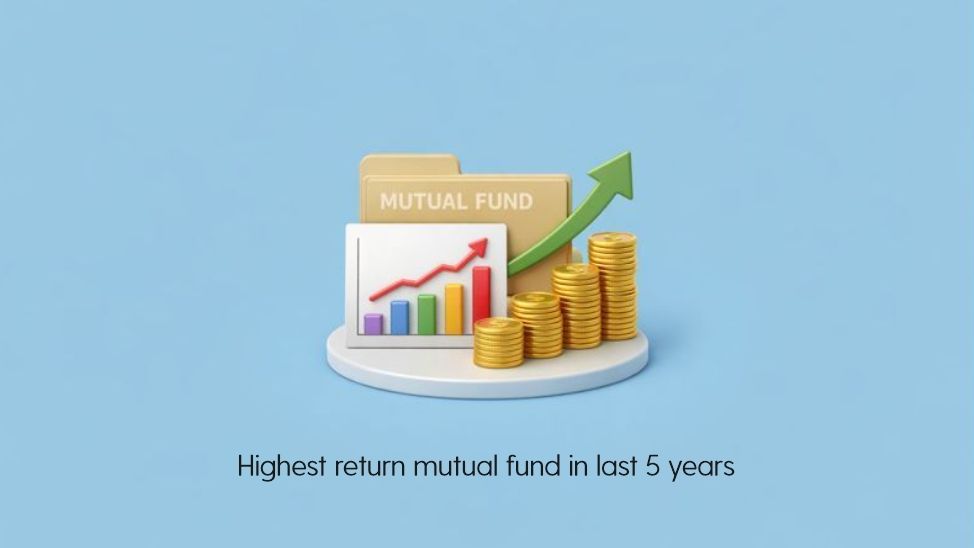Difference Between Bonus Share And Stock Split

- Published Date: May 28, 2024
- Updated Date: June 17, 2025
- By Team Choice
Bonus shares and stock splits are corporate actions taken by companies that affect the number of outstanding shares. While both involve an increase in the number of shares held by shareholders, there are significant differences between the two in terms of their purpose, impact on share capital, and overall implications for investors.
Understanding the distinction between bonus shares and stock splits is crucial for making informed investment decisions.
What is a Bonus Share?
A bonus share, also known as a bonus issue or a stock dividend, is a corporate action in which a company distributes additional shares to its existing shareholders at no extra cost. The number of bonus shares allocated to each shareholder is typically proportional to their current shareholding.
For example, in a 1:1 bonus issue, shareholders would receive one additional share for every share they currently hold.
The primary purpose of a bonus issue is to reward existing shareholders by increasing their ownership stake without requiring them to invest additional funds. It is generally considered a positive signal indicating the company's strong financial performance and its ability to capitalize on its reserves.
What is a Stock Split?
A stock split is a corporate action in which a company increases the number of outstanding shares by dividing each existing share into multiple shares. The split ratio determines the number of additional shares received by shareholders.
For instance, in a 2-for-1 stock split, each shareholder would receive one additional share for every share they hold, effectively doubling the number of shares owned while reducing the share price proportionately.
The primary objective of a stock split is to make the company's shares more affordable and accessible to a broader range of investors. By reducing the share price, the company aims to improve the liquidity and trading volume of its stock.
Impact on Share Price
- Bonus Share: When a company issues bonus shares, the market value of the existing shares is divided among the increased number of shares. As a result, the share price decreases proportionately. However, the total market capitalization of the company remains unchanged.
- Stock Split: Similarly, in a stock split, the share price is adjusted downward in proportion to the split ratio. For example, if a company's stock is trading at ₹100 per share and it announces a 2-for-1 split, the share price would be halved to ₹50 per share.
Impact on Company's Equity
- Bonus Share: A bonus issue involves transferring funds from the company's reserves or retained earnings to the share capital account. This increases the total number of shares outstanding, but the company's overall equity remains unchanged.
- Stock Split: In contrast, a stock split does not affect the company's equity or share capital. It simply increases the number of outstanding shares while proportionately reducing the share price and par value (if applicable).
| Bonus Issue (1:1) | Stock Split (2-for-1) |
|---|---|
| Number of Shares: 100 ➝ 200 | Number of Shares: 100 ➝ 200 |
| Share Price: ₹100 ➝ ₹50 | Share Price: ₹100 ➝ ₹50 |
| Total Market Value: ₹10,000 (unchanged) | Total Market Value: ₹10,000 (unchanged) |
Bonus Shares Vs Stock Splits - What is the Difference?
Another scenario also allows investors to increase their shares without additional cost. A stock split implies a situation when a company gives its shareholders more shares by splitting each share.
In other words, during a split, the total amount of shares rises, whereas the price for one share correspondingly goes down. This makes the stock more accessible and its liquidity rises; therefore, it attracts more investors.
For example, in a 2-for-1 split, every existing share is replaced by two new shares. The price per share would be reduced by half, while the number of shares the owner previously possessed would be doubled.
Even though the share price and number change, the company's total market capitalisation remains unchanged; so does the overall value of an investment for each shareholder right after a split. For tax purposes, the cost basis of the shares is adjusted by the split ratio, but a stock split itself does not have any immediate tax implications. Stock splits in India have often been seen as a good sign for growth and performance within companies, making shares more accessible to potential investors. Here is how bonus shares differ from stock splits:
| Feature | Bonus Shares | Stock Splits |
|---|---|---|
| Definition | Additional shares are issued to existing shareholders for free, usually from company reserves. | Division of existing shares into a larger number of shares, without changing the total value of the investment. |
| Purpose | To reward shareholders and often to lower the share price to make it more attractive. | To make shares more affordable by reducing the share price and increasing liquidity. |
| Impact on Share Price | Reduces the share price proportionally, as the market capitalisation remains the same but is distributed over more shares. | Reduces the share price proportionally, while the total market capitalisation remains the same. |
| Shareholder Equity | Shareholders receive additional shares, increasing their total number of shares while the total value remains the same. | Shareholders have more shares, but the total value remains the same, as the price per share is adjusted accordingly. |
| Cost of Acquisition | The cost of acquisition for bonus shares is considered the same as the original shares for tax purposes. | The cost of acquisition is adjusted based on the split ratio. For tax purposes, the cost of shares is divided by the split ratio. |
| Taxation (India) | Not taxed at the time of issuance. Taxable as capital gains when sold. | Not taxed at the time of split. The adjusted cost basis is used to calculate capital gains when sold. |
| Regulatory Approval | Requires approval from the company’s Board of Directors and possibly shareholders. | Requires approval from the company’s Board of Directors and may need to be disclosed to regulatory authorities. |
| Example | If a company issues a 1:1 bonus share, shareholders receive one additional new share for each share they own. | If a company does a 2-for-1 stock split, each existing share is divided into two shares, effectively halving the share price. |
Bonus Share and Split Share - Calculation with Examples
Example 1:
Bonus Share Calculation (Infosys Ltd. - 2022)
In August 2022, Infosys Ltd. announced a 1:1 bonus issue to mark its 25th year in the public market.
Before the bonus issue:
- Number of shares held by an investor = 1,000
- Market price per share = ₹1,500
- Total market value = 1,000 x ₹1,500 = ₹15,00,000
After the 1:1 bonus issue:
- Number of shares held = 1,000 + 1,000 (bonus shares) = 2,000
- Market price per share (adjusted) = ₹1,500 / 2 = ₹750
- Total market value = 2,000 x ₹750 = ₹15,00,000 (unchanged)
Example 2:
Stock Split Calculation (Reliance Industries Ltd. - 2017)
In September 2017, Reliance Industries Ltd. (RIL) announced a 1:1 stock split.
Before the stock split:
- Number of shares held = 1,000
- Market price per share = ₹1,600
- Total market value = 1,000 x ₹1,600 = ₹16,00,000
After the 1:1 stock split:
- Number of shares held = 1,000 x 2 = 2,000
- Market price per share (adjusted) = ₹1,600 / 2 = ₹800
- Total market value = 2,000 x ₹800 = ₹16,00,000 (unchanged)
Bonus Shares | Stock Split |
Number of Shares: Increases | Number of Shares: Increases |
Share Price: Decreases proportionately | Share Price: Decreases proportionately |
Total Market Value: Remains Unchanged | Total Market Value: Remains Unchanged |
Common Misconceptions
When it comes to corporate actions like bonus shares and stock splits, prevailing misconceptions can lead to misunderstandings. Let's address a few important ones to separate fact from fiction:
Misconception | Fact |
Bonus shares or stock splits create real wealth. | Neither bonus shares nor stock splits create real wealth for shareholders. They merely increase the number of outstanding shares while proportionately reducing the share price, leaving the company's overall market capitalization unchanged. |
Stock splits are more beneficial than bonus shares. | Both corporate actions have different purposes and implications, but neither is inherently better than the other. Stock splits aim to improve liquidity and affordability, while bonus shares reward shareholders by capitalizing on reserves. |
Bonus shares and stock splits have no impact on the company's value. | While the overall market capitalization stays unchanged, these corporate actions can impact investor sentiment, liquidity, and affordability, potentially influencing the stock's future performance. |
Tax Implications
In India, bonus shares and stock splits are generally not taxable events for investors. However, there are certain tax implications to consider:
Bonus Shares | Stock Splits |
Bonus shares are not taxable at the time of issuance. | Stock splits do not attract any direct tax implications for investors. |
The cost basis (acquisition cost) for bonus shares is typically allocated proportionately from the original shares held. | The cost basis (acquisition cost) per share is adjusted proportionately after the split. |
Capital gains tax can be levied when the bonus shares are eventually sold, based on the adjusted cost basis and the sale proceeds. | Capital gains tax is calculated based on the adjusted cost basis and the sale proceeds when the shares are sold. |
The holding period for bonus shares is calculated from the date of acquisition of the original shares. | The holding period for split shares stays the same as the original shares held before the split. |
As a rule of thumb, always consult a qualified tax professional for specific guidance on tax implications based on your circumstances, as tax laws and regulations may change over time.
Comparative Analysis: Benefits and Drawbacks
While bonus shares and stock splits share some similarities, they also have distinct benefits and drawbacks from an investor's perspective. Knowing them can help investors make informed decisions based on their investment goals and risk tolerance. Here's a comparative analysis:
Bonus Shares:
Benefits | Drawbacks |
Rewards existing shareholders without requiring additional investment | Dilutes earnings per share (EPS) as more shares are issued |
Signals company's financial strength and ability to capitalize on reserves | May be perceived as a less significant corporate action compared to stock splits |
Increases the number of outstanding shares, potentially improving liquidity |
Stock Splits:
Advantages | Disadvantages |
Makes shares more affordable and accessible to a broader investor base | Potential for increased volatility and speculation after the split |
Improves liquidity and trading volume of the stock | Administrative costs associated in executing the split process |
Commonly perceived as a positive signal by the market | Perceived value reduction by some investors, despite no actual change in market capitalization |
Conclusion
While both bonus shares and stock splits result in an increase in the number of outstanding shares, their purposes and mechanisms differ. A bonus issue rewards existing shareholders by capitalizing on the company's reserves, while a stock split aims to make the shares more affordable and improve liquidity.
Investors must understand the implications of these corporate actions and how they affect the company's equity, share price, and overall market capitalization. By analyzing the differences between bonus shares and stock splits, investors can make informed decisions and align their investment strategies with their financial goals and risk tolerance.
Remember, neither a bonus issue nor a stock split directly impacts the company's underlying value or an investor's overall shareholding. However, they can influence market sentiment, trading activity, and the accessibility of the stock to different investor segments.
Recommended for you

FII DII Data - Live Data

Share Market Prediction For Tomorrow

Market Prediction Today (30th December 2025)
